
The Dominican Republic is a country on the island of Hispaniola in the Greater Antilles archipelago of the Caribbean Sea, bordered by the Atlantic Ocean to the north. It occupies the eastern five-eighths of the island, which it shares with Haiti, making Hispaniola one of only two Caribbean islands, along with Saint Martin, that is shared by two sovereign states. It is the second-largest nation in the Antilles by area at 48,671 square kilometers (18,792 sq mi), and second-largest by population, with approximately 11.4 million people in 2024, of whom approximately 3.6 million live in the metropolitan area of Santo Domingo, the capital city.

The recorded history of the Dominican Republic began in 1492 when the Genoa-born navigator Christopher Columbus, working for the Crown of Castile, happened upon a large island in the region of the western Atlantic Ocean that later came to be known as the Caribbean. It was inhabited by the Taíno, an Arawakan people, who called the eastern part of the island Quisqueya (Kiskeya), meaning "mother of all lands." Columbus promptly claimed the island for the Spanish Crown, naming it La Isla Española, later Latinized to Hispaniola. After 25 years of Spanish occupation, the Taíno population in the Spanish-dominated parts of the island drastically decreased through genocide. With fewer than 50,000 remaining, the survivors intermixed with Spaniards, Africans, and others, forming the present-day tripartite Dominican population. What would become the Dominican Republic was the Spanish Captaincy General of Santo Domingo until 1821, except for a time as a French colony from 1795 to 1809. It was then part of a unified Hispaniola with Haiti from 1822 until 1844. In 1844, Dominican independence was proclaimed and the republic, which was often known as Santo Domingo until the early 20th century, maintained its independence except for a short Spanish occupation from 1861 to 1865 and occupation by the United States from 1916 to 1924.

Ramón Buenaventura Báez Méndez, was a Dominican conservative politician and military figure. He was president of the Dominican Republic for five nonconsecutive terms. His rule was characterized by corruption and governing for the benefit of his personal fortune.

Juan Pablo Duarte y Díez was a Dominican military leader, writer, activist, and nationalist politician who was the foremost of the founding fathers of the Dominican Republic and bears the title of Father of the Nation. As one of the most celebrated figures in Dominican history, Duarte is considered a folk hero and revolutionary visionary in the modern Dominican Republic, who along with military generals Ramón Matías Mella and Francisco del Rosario Sánchez, organized and promoted La Trinitaria, a secret society that eventually led to the Dominican revolt and independence from Haitian rule in 1844 and the start of the Dominican War of Independence.

Francisco del Rosario Sánchez was a Dominican revolutionary, politician, and former president of the Dominican Republic. He is considered by Dominicans as the second prominent leader of the Dominican War of Independence, after Juan Pablo Duarte and before Matías Ramón Mella. Widely acknowledged as one of the founding fathers of the Dominican Republic, and the only martyr of the three, he is honored as a national hero. In addition, the Order of Merit of Duarte, Sánchez and Mella is named partially in his honor.
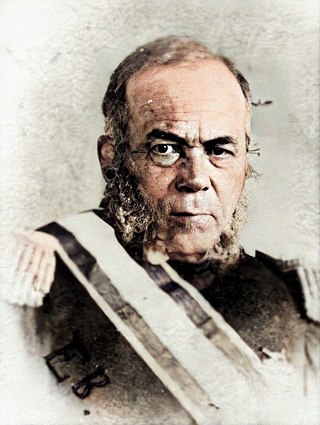
Pedro Santana y Familias, 1st Marquess of Las Carreras was a Dominican military commander and royalist politician who served as the president of the junta that had established the First Dominican Republic, a precursor to the position of the President of the Dominican Republic, and as the first President of the republic in the modern line of succession. A traditional royalist who was fond of the Monarchy of Spain and the Spanish Empire, he ruled as a governor-general, but effectively as an authoritarian dictator. During his life he enjoyed the title of "Libertador de la Patria."

The Dominican War of Independence was a war of independence that began when the Dominican Republic declared independence from the Republic of Haiti on February 27, 1844 and ended on January 24, 1856. Before the war, the island of Hispaniola had been united for 22 years when the newly independent nation, previously known as the Captaincy General of Santo Domingo, was unified with the Republic of Haiti in 1822. The criollo class within the country overthrew the Spanish crown in 1821 before unifying with Haiti a year later.

Matías Ramón Mella Castillo, who was most known by his middle name (Ramón), was a Dominican revolutionary, politician, and military general. Mella is regarded as a national hero in the Dominican Republic. He is a hero of two glorious deeds in Dominican history: the proclamation of the First Republic, and the war to restore Dominican independence. Remembered as one of the three founding fathers of the Dominican Republic, the Order of Merit of Duarte, Sánchez and Mella is partially named in his honor.
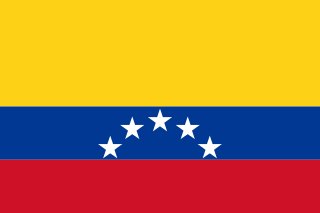
The Republic of Spanish Haiti, also called the Independent State of Spanish Haiti was the independent state that succeeded the Captaincy General of Santo Domingo after independence was declared on November 30, 1821 by José Núñez de Cáceres. The republic lasted only from December 1, 1821 to February 9, 1822 when it was invaded by the Republic of Haiti.

The Dominican Restoration War or the Dominican War of Restoration was a guerrilla war between 1863 and 1865 in the Dominican Republic between nationalists and Spain, the latter of which had recolonized the country 17 years after its independence. The war resulted in the restoration of Dominican sovereignty, the withdrawal of Spanish forces, the separation of the Captaincy General of Santo Domingo from Spain, and the establishment of a second republic in the Dominican Republic.

The Haitian occupation of Santo Domingo was the annexation and merger of then-independent Republic of Spanish Haiti into the Republic of Haiti, that lasted twenty-two years, from February 9, 1822, to February 27, 1844. The part of Hispaniola under Spanish administration was first ceded to France and merged with the French colony of Saint Domingue as a result of the Peace of Basel in 1795. However, with the outbreak of the Haitian Revolution the French lost the western part of the island, while remaining in control of the eastern part of the island until the Spanish recaptured Santo Domingo in 1809.
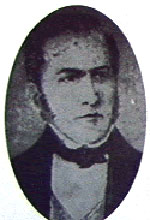
Manuel José Jimenes González was one of the leaders of the Dominican War of Independence. He served as the 2nd President of the Dominican Republic from September 8, 1848, until May 29, 1849. Prior to that he served as the country's Minister of War and Marine Affairs.
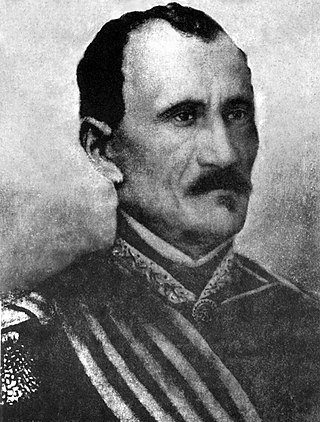
General José María Cabral y Luna was a Dominican military figure and politician. He served as the first Supreme Chief of the Dominican Republic from August 4, 1865, to November 15 of that year and again officially as president from August 22, 1866, until January 3, 1868.
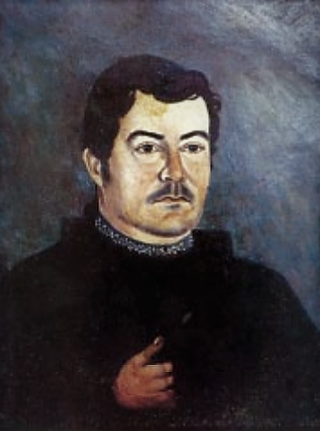
Fernando Arturo de Meriño y Ramírez was a Dominican priest and politician. He served as President of the Dominican Republic from September 1, 1880, until September 1, 1882. He served as the President of Chamber of Deputies of the Dominican Republic in 1878 and 1883. He was later made an archbishop.
Manuel María de la Concepción Gautier was a politician from the Dominican Republic. He served as the acting president of the Dominican Republic from February 27 to April 30, 1889 and later as Vice President of the Dominican Republic from 1889 to 1893.
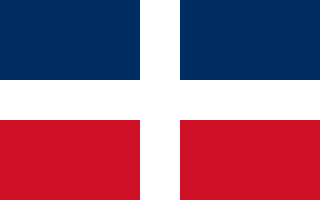
La Trinitaria was a secret society founded in 1838 in what today is known as Arzobispo Nouel Street, across from the "Del Carmen's Church" in the then occupied Santo Domingo, the current capital of the Dominican Republic. The founder, Juan Pablo Duarte, and a group of like minded young people, led the struggle to establish the Dominican Republic as a free, sovereign, and independent nation in the 19th century. Their main goal was to protect their newly liberated country from all foreign invasion. They helped bring about the end of the Haitian occupation of Santo Domingo from 1822 to 1844.
White Dominicans are Dominican people of predominant or full European descent. They are 17.8% of the Dominican Republic's population, according to a 2021 survey by the United Nations Population Fund. The majority of white Dominicans have ancestry from the first European settlers to arrive in Hispaniola in 1492 and are descendants of the Spanish and Portuguese who settled in the island during colonial times, as well as the French who settled in the 17th and 18th centuries. Many whites in the Dominican Republic also descend from Italians, Dutchmen, Germans, Hungarians, Scandinavians, Americans and other nationalities who have migrated between the 19th and 20th centuries. About 9.2% of the Dominican population claims a European immigrant background, according to the 2021 Fondo de Población de las Naciones Unidas survey.
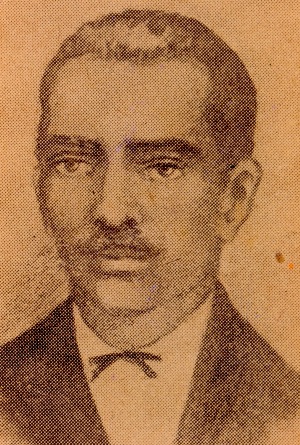
José Joaquín Puello de Castro was a Dominican revolutionary and military general who served as government minister in the Dominican Republic. He and his brothers, Gabino and Eusebio, were some of the prominent black leaders in the Dominican War of Independence. He stood out as a strategist in the wars of independence. He contributed to the plans of the Trinitarios, managing to integrate other figures such as Juan Erazo, Juan Alejandro Acosta and others into the fight who later stood out in patriotic interest.

Tomás Bobadilla y Briones was a writer, intellectual and politician from the Dominican Republic. The first ruler of the Dominican Republic, he had a significant participation in the movement for Dominican independence.
Juan Alejandro Acosta Bustamante (1813–1886) was born in Baní into a locally prominent family. At the age of sixteen, Acosta became a good friend of Juan Pablo Duarte. Acosta became a member of the secret patriotic society, La Trinitaria. He commanded the brigantine Leonor, the first ship to fly the Dominican flag. Acosta commanded various Dominican warships during the fighting against Haiti. He opposed annexation of the Dominican Republic to another nation and was expelled from the Dominican Republic by Buenaventura Báez. He died in poverty.






























